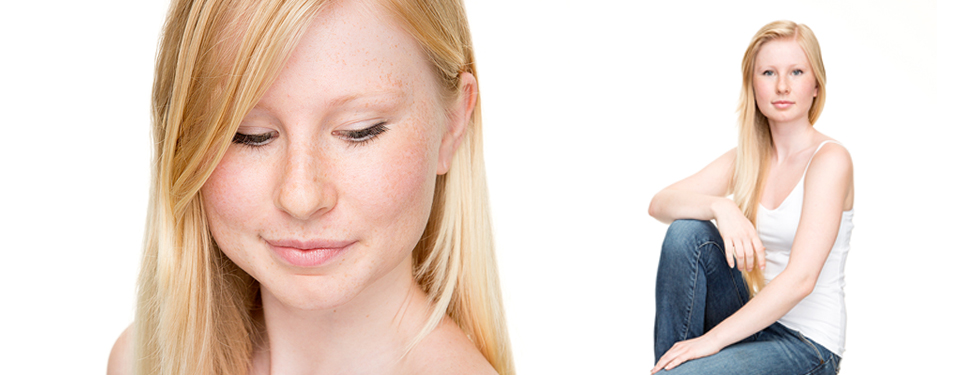We know that skin problems can affect a teenager’s self-esteem and can be a very difficult and sometimes even traumatic experience. We offer the most advanced teen dermatology treatments available and we use the latest techniques to assess and correct specific teen skin issues.
Acne
One of the most common problems teens face is oily skin and acne. While some teenagers are fortunate to only have occasional pimples, many others suffer from constant breakouts. There are unique remedies for addressing the many presentations of acne, whether composed of blackheads, whiteheads or cysts, or located on the face, chest, or back. It’s important to address acne early, if possible, in order to reduce the likelihood of scarring or pigmentary changes. At SMD, we offer a variety of solutions for all forms of acne and comprehensive treatments for acne scarring.
Stretch marks
As growth spurts start, so does the potential for striae (stretch marks). The best time to treat stretch marks is early. There are prescription treatments, which may help reduce the appearance and severity of new stretch marks. For stretch marks which are longer-standing, there are laser technologies which can help. Certain patients, depending on their genetics and ethnicity, may be more prone to develop stretch marks. We are here to offer suggestions and expertise for treating stretch marks at all stages of development.
Eczema
Most teens who suffer from eczema can expect to achieve a dramatic improvement in the condition of their skin by following the skin care recommendations of SMD’s dermatologists. The long-term goal of treatment is to restore the skin to its healthiest state, thereby allowing it to act as a natural water-proof and infection-proof barrier. This will allow the skin to ward off the potentially irritating and drying effects of cleansers, detergents, and chemicals, and will reduce the likelihood of developing allergic skin reactions. During a flare of eczema, prescription products can be prescribed to help reduce the itch, calm down the rash, and clear any infections which may be present. There are also prescription treatments than can help prevent future flares of eczema. A combination of effective non-prescription moisturizers and prescription-based eczema care is the long-term approach we recommend for success.
Sweating
Teenage years are challenging enough and dealing with excessive sweating can be an added stress and source of embarrassment. Commonly affected areas of increased sweating include the palms, soles and armpits. There are newer options available, including topical and oral medications, botulinum toxin injections (Botox) and referrals for MiraDry procedures. At SMD we determine treatments that are best suited for each patient.
Moles
Increased sun exposure during childhood and a family history of moles increases the likelihood of developing moles. Some families with many moles actually have Dysplastic Nevus Syndrome, which includes the presence of many irregularly shaped and sized moles. This syndrome increases the chances of developing melanoma, the most deadly form of skin cancer. Melanoma can occur in individuals of all ages, even teens and young adults. Patients with an increased numbers of moles, or new or changing moles, should be evaluated with a full body skin examination. The dermatologists at SMD counsel patients on what to look for and how often the patient needs to be monitored. The great news is that when detected early, melanoma is curable.
Warts
Warts are caused by a very common virus and tend to be quite stubborn. Some patients only have one wart while others may have multiple. At SMD we use a combination of topical medications and cryotherapy (freezing technique) which can dramatically speed up the disappearance of warts. Typically at least two visits are required, about one month apart, to ensure that the warts have completely resolved with treatment. If the roots of the wart are left behind, they are very likely to come back. For our youngest patients, a treatment called cantharidin (beetle juice) is often utilized as it is usually pain-free.
Molluscum
These tiny bumps, which mimic warts but are not actually warts, are caused by a common virus and are contagious. In children, frequently these bumps occur on parts of the body exposed to touching the skin of other kids. By adolescent and adult years, the bumps also occur in areas of skin-to-skin contact, and can sometimes be considered a Sexually Transmitted Disease as they often appear in the pelvic area. Treatment options may include cryotherapy (freezing technique), cantharidin (beetle juice), which promotes the development of a usually painless blister, curettage (scraping), and/or topical prescription creams.
Fungal Infections
Tinea Pedis (Athlete’s Foot) and Tinea Corporis (Ring Worm) are common infections. It’s possible to become infected with fungus by stepping into a shower at the gym, getting pedicures at a salon, or even from sand at the beach or pets! Athlete’s Foot can be treated with prescription creams and proper foot care regimens. For resistant cases, oral prescription therapy is occasionally needed. The dermatologists at SMD will provide tips so that Athlete’s Foot and other fungal rashes do not become recurrent problems.
Tinea versicolor is caused by an overgrowth of the yeast, which is normally found on skin. Particularly with heat and sweating during summertime, there is an increased incidence of this rash. Tinea versicolor is usually not itchy and located on the chest, abdomen, shoulders and back. It appears as light pink or tan oval patches, with some mild overlying scale (dryness and flaking). There are non-prescription washes and shampoos, or prescription creams or pills, which the dermatologists at SMD can recommend to help clear and prevent future outbreaks of tinea versicolor.


